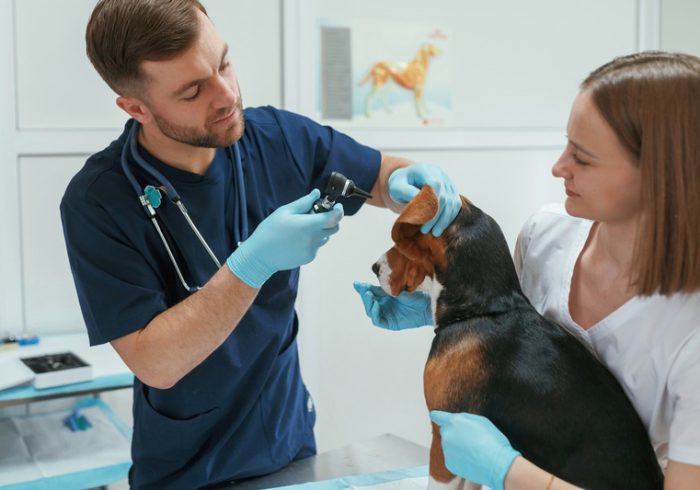Deciding when a pet needs surgery can be a daunting process for any pet owner. You trust your vet to make the best call for your furry friend, but understanding how these decisions are made can bring you some peace of mind. In this article, we’ll break down the factors vets consider when determining whether surgery is necessary for your pet.
1. Medical Condition
Physical Examination
This is often the first step in evaluating a pet’s health. During a physical exam, the veterinarian will assess various aspects of your pet’s body, including:
-
Vital Signs: Checking your pet’s temperature, heart rate, respiratory rate, and mucous membrane color can provide important clues about their overall health and any potential issues.
-
Body Condition: Evaluating your pet’s body condition score helps assess whether it is underweight, overweight, or at an ideal weight for its breed and size.
-
Musculoskeletal System: Palpating joints and muscles for signs of pain, stiffness, or abnormalities can help identify orthopedic issues such as fractures, luxations, or arthritis.
-
Skin and Coat: Examining the skin and coat for abnormalities such as lesions, lumps, bumps, or signs of parasites (fleas, ticks, mites) can indicate dermatological problems.
-
Eyes, Ears, Nose, and Mouth: Inspecting these areas for redness, discharge, swelling, or other abnormalities can reveal issues such as infections, injuries, or dental problems.
-
Abdominal Palpation: Feeling the abdomen for abnormalities in size, shape, or tenderness can indicate gastrointestinal issues, organ enlargement, or masses.
Diagnostic Tests
In addition to the physical examination, veterinarians may recommend various diagnostic tests to gather more information about your pet’s condition:
-
Blood Work: Blood tests can provide valuable information about your pet’s overall health, including organ function, blood cell counts, electrolyte levels, and the presence of infection or inflammation.
-
X-rays (Radiography): X-rays are commonly used to evaluate the skeletal system and detect abnormalities such as fractures, dislocations, bone tumors, and foreign bodies. They can also be used to assess the condition of internal organs, such as the heart and lungs.
-
Ultrasound: Ultrasound imaging allows veterinarians to visualize internal organs in real-time, providing detailed images of structures such as the liver, kidneys, bladder, and reproductive organs. It is often used to diagnose conditions such as tumors, cysts, fluid accumulation, and pregnancy.
-
MRI (Magnetic Resonance Imaging): MRI scans use powerful magnets and radio waves to create detailed images of soft tissues, nerves, and blood vessels. They are particularly useful for diagnosing neurological conditions, spinal cord injuries, brain tumors, and soft tissue injuries.
2. Severity of the Problem
If your pet’s condition is causing significant pain, discomfort, or impairment of function, surgery may be recommended to alleviate these symptoms and improve their quality of life. Conditions such as fractures, tumors, foreign body ingestion, or severe orthopedic issues often require surgical intervention.
3. Conservative Treatments
In some cases, veterinarians may initially recommend non-surgical treatments such as medication, physical therapy, or dietary changes. If these conservative measures fail to manage the pet’s condition adequately or if the problem worsens despite treatment, surgery may become necessary.
Preventive measures like vaccinations play a significant role in overall pet health and can sometimes negate the need for future surgeries. If you’re considering cat vaccinations at Mill Plain Veterinary Clinic, you’re taking a proactive step in keeping your pet healthy. Vaccinations help prevent diseases that could otherwise lead to severe conditions requiring surgical intervention.
4. Potential Benefits vs. Risks
Vets weigh the potential benefits of surgery against the risks involved, taking into account factors such as the pet’s age, overall health status, and the likelihood of a successful outcome. They will discuss these considerations with you and provide information to help you make an informed decision about whether to proceed with surgery.
Specialized areas like pet ophthalmology in Danbury can provide crucial insights into eye-related conditions that might require surgery. Common issues like cataracts, glaucoma, and retinal diseases often require surgical intervention to prevent further complications.
5. Owner Preferences
Veterinarians also consider the pet owner’s preferences and circumstances when recommending surgery. They will discuss treatment options, including the potential risks, benefits, and costs, and collaborate with the owner to develop a plan that aligns with the pet’s best interests and the owner’s wishes.
6. Experience and Specialty
The vet’s experience and specialty can also influence the decision. A vet who specializes in certain types of surgery will be more confident in recommending them if necessary. For example, vets experienced in cat surgery would be more likely to suggest the procedure if it promises significant improvement.
Types of Veterinary Surgery
Emergency Surgery
Emergency surgeries are performed when there is an immediate threat to your pet’s life or well-being. These surgeries are often critical and require prompt intervention to prevent further harm or complications. Some common examples of emergency surgeries include:
-
Bladder Obstruction
-
Severe Trauma
-
Life-Threatening Infections or Abscesses
Prompt recognition and treatment of these emergencies are crucial for the best possible outcomes. Pet owners should seek immediate veterinary care if their pet experiences any signs of these conditions, such as difficulty urinating, severe injuries, or signs of severe infection.
Elective Surgery
Elective surgeries are planned and are not immediately critical to your pet’s life. These procedures are typically scheduled based on factors such as your pet’s age, health status, and reproductive status. While they may not be urgent, elective surgeries are still important for maintaining your pet’s health and well-being. Some common examples of elective surgeries include:
-
Spaying and Neutering
-
Dental Extractions
-
Removal of Benign Tumors
Elective surgeries are typically less urgent than emergency surgeries but still require careful consideration and planning. Pet owners should discuss the potential risks, benefits, and timing of elective surgeries with their veterinarian to make informed decisions about their pet’s care.
Final Thoughts
Deciding whether your pet needs surgery involves thorough assessments, diagnostic tests, and weighing the risks and benefits. Consulting experienced and specialized vets, getting vaccinations, and employing preventive care can make a significant difference in your pet’s overall health. Understanding these elements can help you make a more informed decision, offering peace of mind that you’re doing the best for your beloved pet.





